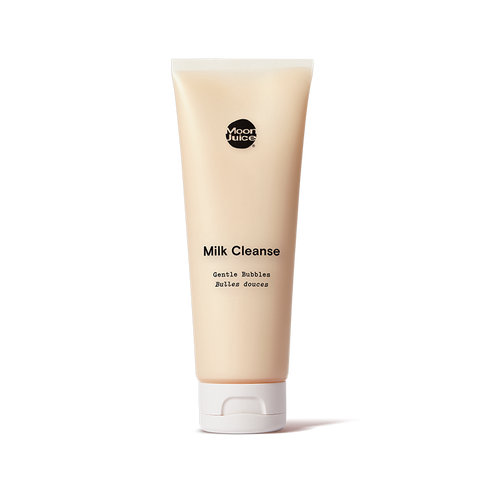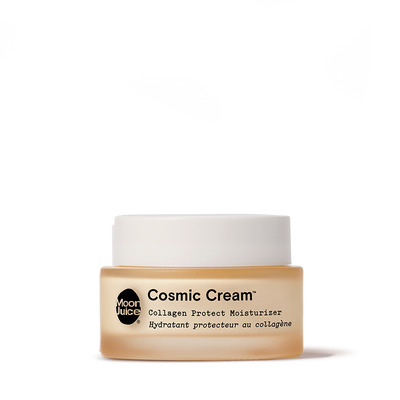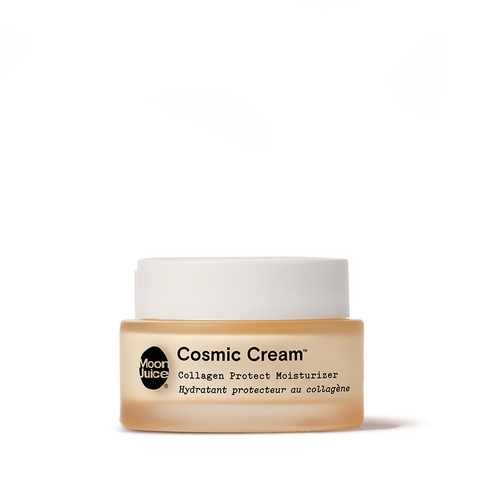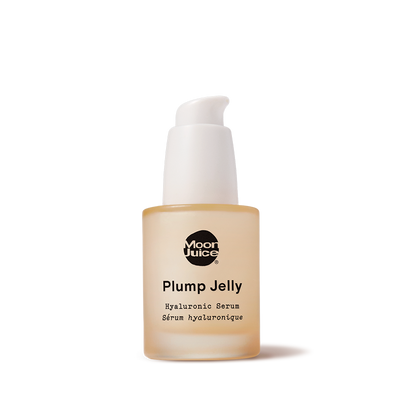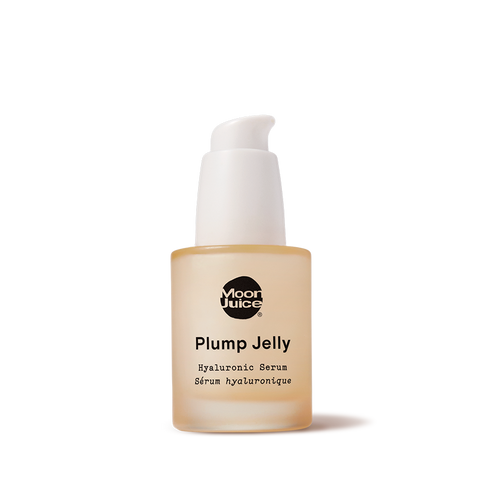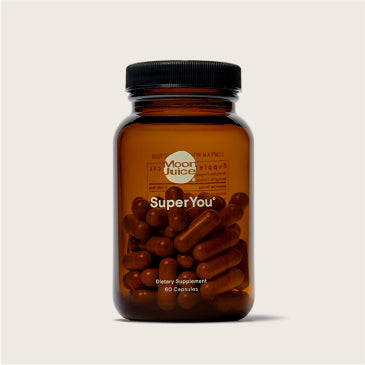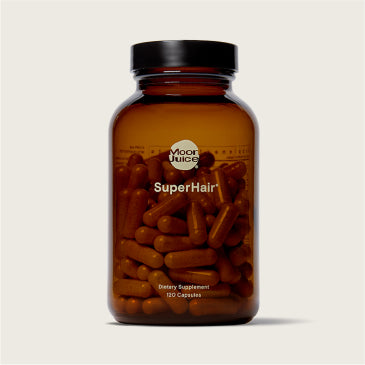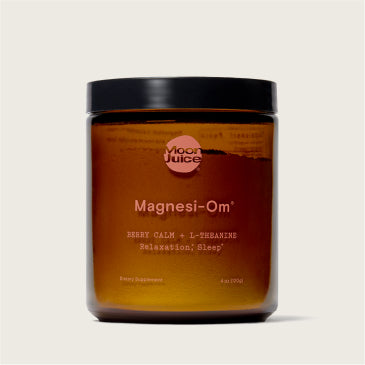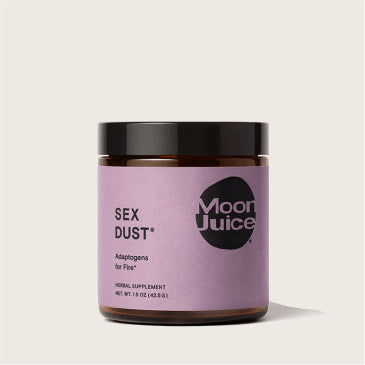Health encompasses far more than simply the food we eat and the movement we engage in. What we put on our bodies is just as important as what we put in them. After all, the skin is the largest organ of our bodies, and what we put on it ultimately gets absorbed into our bloodstream, either building or deteriorating our health. Surprisingly, there are a handful of common cosmetic ingredients in skin care that can actually do more harm than good. Although these ingredients seem to address skin concerns, they can actually create imbalances in the barrier and biome, causing irritation, inflammation, and breakouts later on.
Read on to learn about what ingredients to look out for, and which to avoid, when making your next skin care product purchase.
What Skin Care Ingredients Should You Avoid?
Supporting skin health can be simple. You don’t have to be an esthetician or dermatologist to confidently select organic skin care — just watching out for these 13 harmful ingredients will get you on your way to healthier skin.
1. Chemical Sunscreen
There are two types of sunscreen, chemical sunscreen and mineral sunscreen. Chemical sunscreens contain ingredients like Oxybenzone, Octinoxate, and Avobenzone, which seep into the skin and absorb UV rays, convert the UV rays into heat, and release that heat through the body. Because the skin absorbs chemical sunscreens, they can do more than block UV rays and have been shown to disrupt hormones and once leached into the ocean, can be harmful to aquatic life. On the other hand, mineral sunscreens contain Zinc Oxide or Titanium Dioxide, ingredients that create a layer on top of the skin to protect it from UV rays. Because mineral sunscreen does not get absorbed by the skin, it won’t cause any imbalances in your health. Whether you're looking for a facial sunscreen, body sunscreen, or even a tinted moisturizer with SPF, try opting for mineral.
2. Methylisothiazolinone
Methylisothiazolinone is an ingredient commonly used in water-based skin care for its preservative abilities. While it can stop the growth of bacteria, fungi, and yeast in your skin care, it’s actually problematic for the healthy bacteria on your skin. Methylisothiazolinone has been deemed unsafe and banned in several countries because it’s allergenic, inflammatory, and immunotoxic.
3. Sodium Lauryl Sulfate
Sodium Lauryl Sulfate is an ingredient that was initially created as an industrial wartime degreaser but eventually found its way into conventional skin care products for its ability to lather and foam. Although Sodium Lauryl Sulfate is a common ingredient in cleansers, its foaming effect is damaging to the skin barrier. When not fully rinsed off, the chemical residue of Sodium Lauryl Sulfate can dehydrate skin, reduce ceramide levels, and even be a toxic chemical to organs when used long-term.
If you’re looking for a barrier-friendly alternative, Milk Cleanse is formulated with Coconut Ferment, a gentle alternative that removes impurities but never strips the barrier.
4. Acrylates
Acrylates (like Ethyl Acrylate, Ethyl Methacrylate, and Methyl Methacrylate) are adhesives, commonly used when applying fake nails or eyelashes. Because nails and eyelashes are porous, whatever gets applied to them gets absorbed into the bloodstream. Acrylates can trigger contact allergies and negatively alter thyroid health. Be mindful to avoid Acrylates when possible to support your immediate skin health and long-term physical health.
5. Avoid Parabens
Even though so many of us know the dangers of parabens, they’re still sneakily being added to many skin care products like cleansers and moisturizers. Parabens are derived from petroleum, aka crude oil, making them environmentally unfriendly. They have a preservative effect, meaning they prevent the growth of bacteria, fungi, and yeast. This ingredient can cause short-term allergies on contact and has also been linked to breast cancer, endocrine disruption, and infertility. If you’re looking to reduce your risk of hormonal imbalance, opt for a natural, paraben-free alternative.
6. Avoid Propylene Glycol
Propylene Glycol is a synthetic, colorless liquid made from petroleum and often used in skin care product formulations. Propylene Glycol is not classified as hazardous, but It's best to steer clear of this ingredient as it may trigger contact allergies if you have pre-existing skin conditions. Since Propylene Glycol is not environmentally friendly and there's no guaranteed way to know how this ingredient might affect your skin, it's safer to avoid it in your skin care routine.
7. PEGs
PEGs (Polyethylene Glycols) are commonly added to skin care products for their moisturizing effect. While they may make skin appear supple, PEGs can cause respiratory and nervous system imbalances and have been linked to skin cancer. PEGs can also disrupt the skin barrier by allowing other unwanted harmful ingredients to seep in, so opt for a PEG-free moisturizer to support your long-term skin health.
8. Formaldehyde
Formaldehyde is a colorless, highly flammable, and highly toxic ingredient that has still managed to find its way into skin care products because of its preservative ability to prevent the growth of bacteria. Formaldehyde is a known carcinogen, and exposure to high amounts of this dangerous ingredient can put you at risk for immediate health issues like lung, eye, and skin irritation on contact as well as long-term health issues like asthma and neurotoxicity. Clearly, Formaldehyde doesn’t benefit skin health or brain health, yet it is frequently added to most conventional skin care products.
9. Toluene
Toulene is a paint thinner that has gone on to be included in most conventional nail polishes, and because nail health impacts skin health, skipping Toulene for healthy skin is essential. Toulene is a petrochemical that is immunotoxic, neurotoxic, carcinogenic, and capable of causing birth defects. Short-term exposure to Toulene can also cause nausea and irritation to the eyes, skin, and lungs. There’s essentially no benefit to Toulene being in any beauty product that gets applied to something so sensitive and important as your skin, so look out for your long-term health by double checking the ingredients in your nail polish.
10. Phthalates
Phthalates are another ingredient commonly known for its unhealthy effects. This ingredient allows the scent chemicals in skin care products and perfumes to stick to your skin, but with long-term use, Phthalates can weaken the health of your major organs, immune system, and reproductive system. While the European Union has already banned Phthalates from being used in skin care products because of this, the FDA has not, so avoiding this ingredient is a conscious choice.
11. Triclosan
Triclosan is the ingredient that makes antibacterial soaps actually antibacterial as it kills bacteria and mold and minimizes associated odors. While this sounds helpful to include in soaps, it ends up doing more harm than good by creating antibiotic-resistant bacteria that disrupt hormone health (by increasing testosterone). Once washed down the drain, Triclosan harms waterways by killing fish and algae — making it an all around unhealthy ingredient for the skin and the environment.
12. Mineral Oil
Mineral Oil may sound like an innocent, even healthy ingredient but it is actually just a byproduct of petroleum and has its own side effects. Mineral Oil is carcinogenic, immunotoxic, and allergenic. Despite the immediate and long-term effects on health, Mineral Oil continues to show up on the ingredient lists of cleansers, makeup, and sunscreen. Plenty of other oils are skin-supportive (like Rice Bran Oil and Vitamin E), so avoiding Mineral Oil for more hydrating ingredients should be a breeze.
13. Paraffin
Paraffin is the waxy, oily residue of petroleum, making it an environmentally unfriendly ingredient. Paraffin is frequently added to unsafe skin care for its ability to provide a smooth texture to the beauty product and temporarily soften skin. While Paraffin has been considered safe to use in the U.S. when highly refined (making it harmful to the environment), other countries have labeled it a dangerous substance for its impact on human health. Specifically, Paraffin can cause skin irritation, break down collagen (a necessity for plump, healthy skin), increase estrogen, and accumulate over time to cause nutrient deficiencies, sleep issues, menstrual issues, inflammation, allergies, autoimmunity, infertility, and cancer. Although Paraffin continues to be included as an ingredient in skin care, it does not nourish skin and has been shown to diminish health.
Sign Up, Nerd Out
Get wellness tips, education, and recipes
delivered straight to your inbox.
Get wellness tips, education,
and recipes delivered
straight to your inbox.
Why Are These Ingredients Bad?
Not all skin care ingredients are created equal. While some have the ability to support the skin’s natural function, others can cause disruption. So why are they included in common formulas?
Certain cosmetic ingredients may be added to skin care simply because they’re cheap, preserve shelf life, act as a filler, or mask the scent of chemical ingredients. While they may be helping out the formula, they’re not helping out your skin. Beyond causing skin issues, these unfriendly ingredients can disrupt your brain, hormones, and even your immune system — all of which will not be listed on the label.
There’s also environmental impact. Certain ingredients can be unhelpful, and even harmful, when we weigh their impact on environmental health. For example,
once rinsed off your face and sent down the drain, some ingredients can create unnatural pH levels in oceans that lead to coral reef bleaching or toxic algae blooms.
What Skin Care Ingredients Should I Look For?
So some skin care ingredients can weaken health, but what can you actually do about it, and what should you buy instead? The next time you look at an ingredient label of a moisturizer or liquid exfoliator you’re eyeing, simply ask yourself, “Can I confidently pronounce this ingredient? Would I ingest this ingredient?” If the answer is an obvious no, it’s probably best to skip. But if that feels too reductive, or you want to nerd out on the details, here’s what you should look out for specifically:
- Acids – Help remove dead skin, improve skin texture, and increase collagen without disrupting the barrier. Look for AHAs, BHAs, Ferulic Acid, and Hyaluronic Acid.
- Adaptogens – Typically taken as supplements to relieve stress, defend against accelerated aging, and protect the skin. Look for Amla, Ashwagandha, Astragulus, and Schisandra.
- Antioxidants – Make the skin resilient to stress and environmental toxins when applied topically. Look for Silica and the master antioxidant, Glutathione.
- Fats – Help with day-to-day skin functions, protect the skin barrier, and soothe inflammation. Look for Omega-3 fatty acids (Alpha-Linolenic Acid, Eicosapentaenoic Acid, and Docosahexaenoic acid) and Omega-6 fatty acids (Gamma Linolenic Acid).
- Mushrooms – They can balance the skin’s natural barrier. Look for Reishi and Silver Ear Mushroom.
- Vitamins – Provide the skin with essential nutrients to recover and repair. Look for Vitamin B, Vitamin C, and Vitamin E.
Remember, your skin is designed to take care of itself. Beauty products that disrupt its natural function often include ingredients that can kill good bacteria, alter skin’s delicate pH, and leave you feeling dry, inflamed, or prone to breakouts. When you start to incorporate natural products formulated with your barrier and biome in mind, like Milk Cleanse facial cleanser and Cosmic Cream™ face cream, you’ll start to notice transformative results.
Make Your First Skin Care Swap
Now that you know not all skin care ingredients support healthy skin, you can begin avoiding the 13 ineffective and unhealthy skin care ingredients and look out for better ingredients.
As you consciously replace your current personal care products with cleaner options, you can look for beauty products with ingredients proven to support skin health.
If you’re thinking about making your first skin care swap, start with the foundation of your routine: cleanser and learn how to properly use a facial cleanser here. Milk Cleanse combines Coconut ferment and Silver Ear Mushroom, which become creamy bubbles that match your skin's pH, hydrate, nourish, and never strip. It also has adaptogenic Reishi to help improve barrier function.
Since skin is your largest organ and the personal care products you put on it are often applied daily, be sure your skin care ingredients are good for you and the environment. If you’d rather get straight to the point, start at Moon Juice.
Sources
- National Library of Medicine, Dermatological and environmental toxicological impact of the sunscreen ingredient oxybenzone/benzophenone-3 https://pubmed.ncbi.nlm.nih.gov/29086472/
- Environmental Working Group, The trouble with ingredients in sunscreens https://www.ewg.org/sunscreen/report/the-trouble-with-sunscreen-chemicals/
- JAMA Network, Effect of Sunscreen Application on Plasma Concentration of Sunscreen Active Ingredients A Randomized Clinical Trial https://jamanetwork.com/journals/jama/fullarticle/2759002
- Cosmetic Ingredient Review, Safety Assessment of Methylisothiazolinone and Methylchlorothiazolinone as Used in Cosmetics https://www.cir-safety.org/sites/default/files/MI_MCI.pdf
- Environmental Working Group, Methylchloroisothiazolinone https://www.ewg.org/skindeep/ingredients/703924-METHYLCHLOROISOTHIAZOLINONE
- National Library of Medicine, Human and Environmental Toxicity of Sodium Lauryl Sulfate (SLS): Evidence for Safe Use in Household Cleaning Products https://www.ncbi.nlm.nih.gov/pmc/articles/PMC4651417/
- National Library of Medicine, Ethyl acrylate (EA) exposure and thyroid carcinogenicity in rats and mice with relevance to human health https://pubmed.ncbi.nlm.nih.gov/34015422/
- US Food & Drug Administration, Parabens in Cosmetics https://www.fda.gov/cosmetics/cosmetic-ingredients/parabens-cosmetics
- National Library of Medicine, Propylene glycol, skin sensitisation and allergic contact dermatitis: A scientific and regulatory conundrum https://pubmed.ncbi.nlm.nih.gov/36702195/
- National Library of Medicine, Safety assessment of propylene glycol, tripropylene glycol, and PPGs as used in cosmetics https://pubmed.ncbi.nlm.nih.gov/23064775/
- National Library of Medicine, Immediate Hypersensitivity to Polyethylene Glycols and Polysorbates: More Common Than We Have Recognized https://pubmed.ncbi.nlm.nih.gov/30557713/
- Science Direct, Percutaneous absorption of formaldehyde in rats https://www.sciencedirect.com/science/article/abs/pii/0378427485900785?via%3Dihub
- National Library of Medicine, Formaldehyde may be found in cosmetic products even when unlabelled https://www.ncbi.nlm.nih.gov/pmc/articles/PMC5152996/
- National Cancer Institute, Formaldehyde and Cancer Risk https://www.cancer.gov/about-cancer/causes-prevention/risk/substances/formaldehyde/formaldehyde-fact-sheet
- Environmental Working Group, Toluene https://www.ewg.org/skindeep/ingredients/706577-TOLUENE/
- US Food & Drug Administration, Phthalates in Cosmetics https://www.fda.gov/cosmetics/cosmetic-ingredients/phthalates-cosmetics#fda
- National Library of Medicine, Effects and Mechanisms of Phthalates’ Action on Reproductive Processes and Reproductive Health: A Literature Review https://www.ncbi.nlm.nih.gov/pmc/articles/PMC7559247/
- National Library of Medicine, Triclosan and antimicrobial resistance in bacteria: an overview https://pubmed.ncbi.nlm.nih.gov/16922622/
- National Library of Medicine, Triclocarban enhances testosterone action: a new type of endocrine disruptor? https://pubmed.ncbi.nlm.nih.gov/18048496/
- Environmental Working Group, Mineral Oil https://www.ewg.org/skindeep/ingredients/703977-MINERAL_OIL/
- National Library of Medicine, Specific in vitro toxicity of crude and refined petroleum products: II. Estrogen (alpha and beta) and androgen receptor-mediated responses in yeast assays https://pubmed.ncbi.nlm.nih.gov/20821602/

-(1).png?v=1682403982616)
.png?v=1682403994419)


